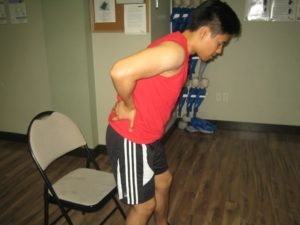The rectus femoris is included among the strong quadriceps muscles. A break on the tendon at the upper part of the muscle close to the hip occurs if the individual subjected large loads on the muscle or overuse.
What are the symptoms?
The symptoms of a ruptured rectus femoris tendon include abrupt pain at the anterior part of the hip or the groin while engaging in any type of explosive activity. Bruising and swelling can occur along with pain when lifting the knee up against resistance. In most cases, tenderness can be felt when pressing in at the point of muscle attachment at the front part of the hip. In case a full rupture occurred, it might be impossible to contract the muscle.
A close look on a ruptured rectus femoris tendon
It is important to note that the rectus femoris muscle is the big quadriceps muscle that travels down the middle part of the anterior area of the thigh. This is described as a bi-axial muscle that crosses two joints, both the knee and hip joint. This is used in order to straighten out or lift the knee up. As a result, there are often substantial forces placed through the muscle, particular when jumping or kicking.

Take note that this tendon can rupture or end up inflamed at the upper region close to the starting point of the hip. The exact cause of this is overuse via explosive movements or kicking particularly when sprinting starts.
Treatment for a ruptured rectus femoris tendon
When managing a ruptured rectus femoris tendon, the individual should rest and utilize cold therapy and compression right away. An ice pack can be applied for 10-15 minutes every hour for the initial 24 hours or so throughout the acute phase. The frequency can be reduced to 2-3 times in a day as the symptoms start to subside. When an ice pack is applied, it should be covered with a clean towel or cloth before application in order to avoid causing injuries on the skin.
The therapist will utilize laser treatment and ultrasound to manage the pain, inflammation and start the healing process. After the acute phase, sports massage can be carried out since it is beneficial. In addition, deep tissue massage and cross friction massage can be performed to relax the muscle. In case the tendon is completely torn, a surgical procedure is usually carried out to repair it.
A rehabilitation program involving strengthening and stretching exercises must be performed before starting the sports specific functional exercises in order to restore the full fitness level of the individual.
As for an incomplete rupture of the muscle, it can result to soreness after the primary rupture has fully healed. The individual can avoid ending up with groin injuries by making sure that the muscles are flexible and strong during the stretching and strengthening exercises.
